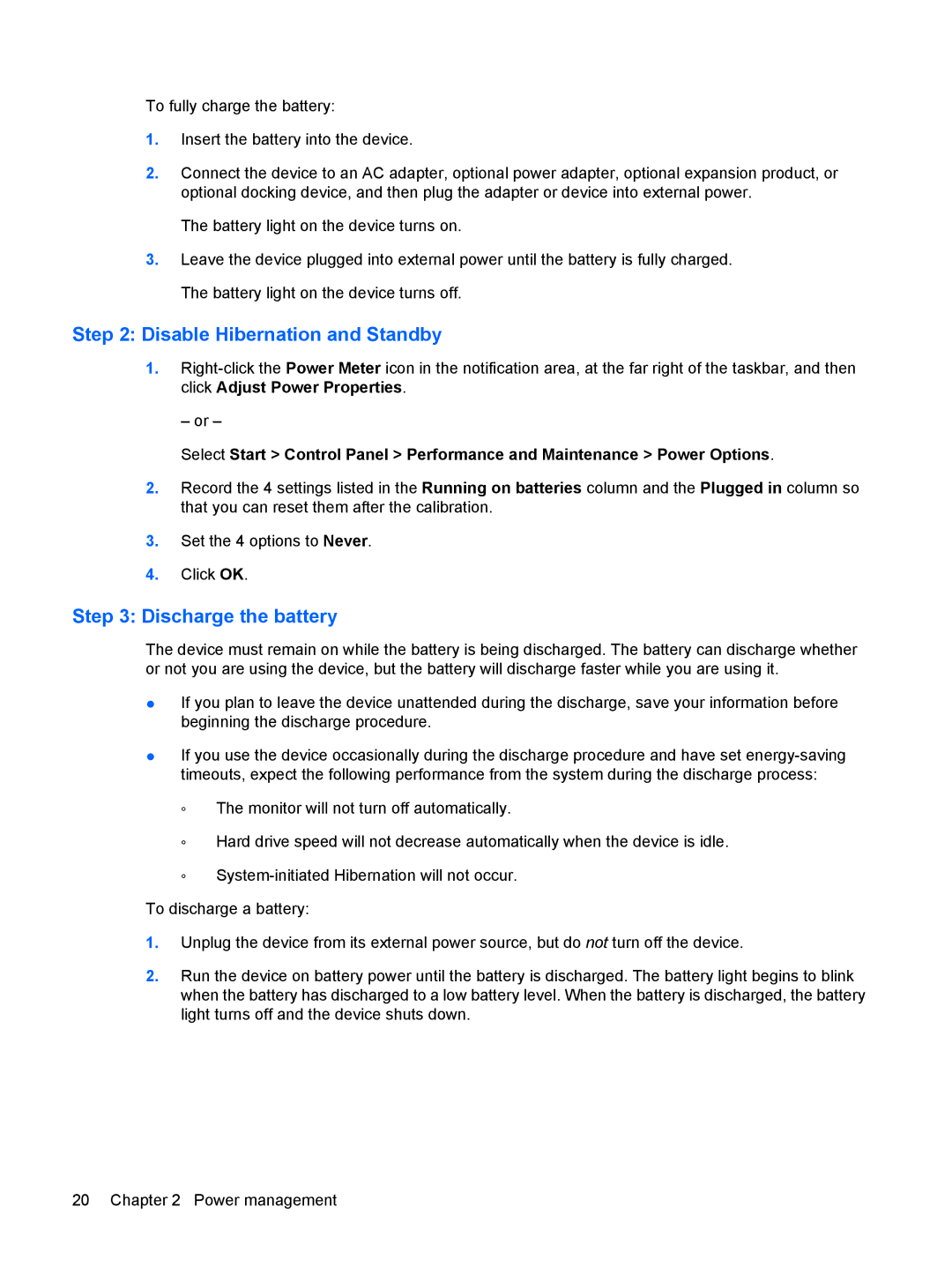To fully charge the battery:
1.Insert the battery into the device.
2.Connect the device to an AC adapter, optional power adapter, optional expansion product, or optional docking device, and then plug the adapter or device into external power.
The battery light on the device turns on.
3.Leave the device plugged into external power until the battery is fully charged. The battery light on the device turns off.
Step 2: Disable Hibernation and Standby
1.
– or –
Select Start > Control Panel > Performance and Maintenance > Power Options.
2.Record the 4 settings listed in the Running on batteries column and the Plugged in column so that you can reset them after the calibration.
3.Set the 4 options to Never.
4.Click OK.
Step 3: Discharge the battery
The device must remain on while the battery is being discharged. The battery can discharge whether or not you are using the device, but the battery will discharge faster while you are using it.
●If you plan to leave the device unattended during the discharge, save your information before beginning the discharge procedure.
●If you use the device occasionally during the discharge procedure and have set
◦The monitor will not turn off automatically.
◦Hard drive speed will not decrease automatically when the device is idle.
◦
To discharge a battery:
1.Unplug the device from its external power source, but do not turn off the device.
2.Run the device on battery power until the battery is discharged. The battery light begins to blink when the battery has discharged to a low battery level. When the battery is discharged, the battery light turns off and the device shuts down.
20 Chapter 2 Power management
